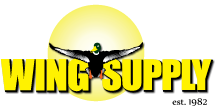Your cart is empty.
Hatsan Q&A:
Filling your Hatsan PCP Airgun – Hatsan SCUBA Fill Kit:
While using a Hatsan Hand pump may be the simplest method to fill your Hatsan PCP airgun, it can take a lot of work, especially if you are a volume shooter. There are other ways to more quickly charge your Hatsan Air Cylinder and one of the easiest is by using a SCUBA tank and the Hatsan Fill Kit. But, knowing what you need to make sure it works correctly can be a challenge. In this video we discuss different types of tank valves and how to make them work with the Hatsan SCUBA Fill Kit. Once you have the basics down, it is smooth sailing from there.

Filling your Hatsan PCP Airgun:
PCP airguns do not need to be a mystery. In fact, they are very easy to shoot and fill, so long you understand the basics. They provide airgunners the most powerful, most accurate, are the easiest to shoot, especially for firearms folks looking to add airguns to their shooting regimen. In this video we discuss the most direct fill method, i.e. using a simple hand pump. The new Hatsan hand pump takes fewer strokes and not includes particle and moisture traps in the handles. If you’ve ever wanted to know how easy it was to fill up a PCP video, here’s your chance.

Understanding the Quattro Trigger:
The Quattro trigger is one of the most sophisticated airgun triggers on the market today. It is has 3 user adjustable settings via 3 adjustment screws. Starting from the front of the rifle:
- The first screw, closest to the muzzle, adjusts the angle of engagement of the 1st stage travel. It is adjusted with the larger Allen wrench and is best left all the way in.
- The middle screw, also adjusted with the larger Allen wrench, is used to lengthen or shorten the 2nd stage. Screwed all the way in sets the 2nd stage to the longest pull length. Backing it out, moves the 2nd stage engagement further and further back in the trigger pull, effectively shortening the final pull before the gun fires. An optimal adjustment is usually about 1 full turn out. The usable adjustment for this screw is very small. Once backed out 1 full turn, there may only be 1/2 turn of adjustment to the length of the 2nd stage. Adjust using 1/16 of a turn between 1 and 1.5 turns out. Caution! DO NOT OVER ADJUST as this could damage your gun.. Use proper caution when adjusting the middle screw.
- The last screw which is set in the back of the trigger assembly adjusts the pull weight for the trigger. It is adjusted by using the small Allen wrench. Backing out this screw will lighten the pull weight. Typically, the minimum pull weight will be between 2.5 and 3 pounds when properly adjusted.CAUTION! There is a point where the trigger is as light as possible. Continuing to back out the screw will not further reduce the pull weight. It is normal for most of the adjustment screw to remain in the trigger mechanism.
- Lastly, the design of the trigger blade is a little different than most guns. Pulling straight back will increase the resistance of the pull. However, pulling back and up, at about a 30 to 45 degree angle, reduces the felt trigger pull significantly. A simple adjustment to the shooter’s hold will accommodate this type of trigger design.
What is the effective range of my airgun?
The range of most airguns exceeds the skill of their owner. Here’s how you can test your effective range. The average kill zone on small game is about 1”. So, take a target and draw a 1” circle. You can use a quarter which is pretty close. Now backup to 10 yards and fire 5 shots freehand at that circle. If you get all 5 shots inside the circle, you can check 10 yards off the list as an effective range. Now back up in 5 yard increments and repeat the test. When you can no longer keep all 5 shots in the circle, you’ve exceeded your maximum effective range. More than likely 15 to 20 yards will be the limit. If you learn proper technique and continue to practice, you can increase your effective range and get more out of your airgun. Remember, a shot outside the circle often means that you’ll have a wounded animal that is suffering. Responsible hunters don’t take irresponsible shots.

